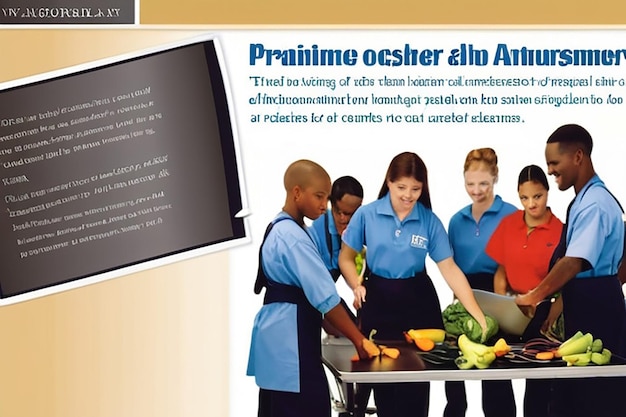TANF Changes 2025: Updated Work Requirements & What Families Need to Know

TANF (Temporary Assistance for Needy Families) is undergoing changes in 2025, particularly impacting work requirements; families need to understand these updates to maintain eligibility for critical assistance programs, ensuring their continued access to essential resources and support.
Navigating the world of public assistance can be complex, especially when policies evolve. The **TANF Changes in 2025: What Families Need to Know About Updated Work Requirements** are poised to reshape how families access vital support.
Understanding TANF: A Brief Overview
The Temporary Assistance for Needy Families (TANF) program is a federal initiative designed to provide financial assistance and support services to families with low incomes. It aims to help families achieve self-sufficiency through various means, including job training, work experience, and childcare assistance. Understanding the core principles of TANF is crucial for grasping the significance of upcoming changes.
The Purpose of TANF
TANF’s primary goal is to reduce dependence on government benefits by promoting work and responsibility. It operates under a set of federal guidelines, but states have significant flexibility in designing and implementing their own TANF programs.
Key Components of TANF
- Financial Assistance: Direct cash payments to eligible families to help cover basic needs.
- Work Requirements: Mandates for recipients to participate in work-related activities.
- Support Services: Assistance with childcare, transportation, and other needs to facilitate employment.
- Time Limits: Restrictions on the duration of TANF benefits to encourage self-sufficiency.
Understanding these components provides a foundation for appreciating how the 2025 changes will impact families and the broader support system. TANF serves as a crucial safety net, and any modifications to its structure can have far-reaching consequences.

Major Changes to TANF Work Requirements in 2025
The TANF program is set to undergo significant changes in 2025, particularly concerning work requirements. These changes aim to refine the program’s focus on employment and self-sufficiency. Understanding the specifics of these updates is essential for families and stakeholders alike.
Increased Hourly Requirements
One of the primary changes involves an increase in the number of hours recipients are required to work or participate in work-related activities. This adjustment seeks to encourage greater engagement in the workforce.
Expanded Definition of Work Activities
The definition of what qualifies as a work activity is also being broadened. This expansion includes a wider range of training programs, educational opportunities, and community service initiatives. States will have more flexibility in tailoring these activities to meet local needs.
The exact nature and extent of these changes will vary from state to state, based on their specific TANF programs.
Impact on Eligibility
These changes could affect families in several ways:
- Increased Pressure to Work: Families may face greater pressure to meet stricter work requirements.
- Need for More Support Services: Additional childcare and transportation assistance may be needed to facilitate work participation.
- Potential for Sanctions: Failure to comply with the new requirements could result in reduced benefits or termination of assistance.
Staying informed about these adjustments is crucial for families to navigate the evolving landscape of TANF. It is also important to recognize that various challenges still exist. Increased work requirements may not be sufficient to address the root causes of poverty and unemployment.
How These Changes May Affect Families
The impending changes to TANF work requirements are likely to have a multifaceted impact on families. Understanding these potential effects is crucial for navigating the evolving landscape of public assistance.
Impact on Low-Income Families
For low-income families, the increased work requirements may present both challenges and opportunities. While the emphasis on employment could lead to greater financial stability, it may also create additional burdens.
Impact on Single-Parent Households
Single-parent households may face unique difficulties in meeting the new work requirements, particularly if they lack access to affordable childcare.
They may need more support to help find better work opportunities.
These changes could also affect children in TANF families, who may need additional care and support.
Impact on Rural Communities
Families in rural communities may encounter specific challenges related to transportation and access to job opportunities. It is essential to consider these issues when assessing the potential impact of the TANF changes.

Strategies for Families to Adapt
In light of the upcoming changes to TANF work requirements, it is essential for families to develop proactive strategies for adapting to the new landscape. These strategies can help families maintain their eligibility for assistance and achieve long-term self-sufficiency.
Understanding State-Specific Requirements
Staying informed about the specific TANF requirements in their state is crucial for families. This knowledge empowers them to make informed decisions and take appropriate action.
Accessing Support Services
Families should explore available support services, such as childcare assistance, transportation assistance, and job training programs. These resources can help them overcome barriers to employment and meet the new work requirements.
Understanding what state-specific programs are available to parents that need financial, housing and child care assistance could make a difference on participation.
Seeking Career Counseling and Job Placement Assistance
Families can benefit from seeking career counseling and job placement assistance to identify suitable employment opportunities. These services can provide guidance and support in navigating the job market.
Networking and Building Connections
Networking and building connections with local employers and community organizations can open doors to new job opportunities. Creating a supportive network can enhance families’ ability to adapt and thrive.
Policy Implications and Community Resources
The changes to TANF work requirements have significant policy implications and necessitate the strategic allocation of community resources. Understanding these aspects is essential for ensuring the effective implementation of the program and the well-being of families.
State and Federal Policy Considerations
Policymakers at the state and federal levels must carefully consider the potential impact of the TANF changes. This includes assessing the adequacy of support services and addressing any unintended consequences.
The Role of Community Organizations
Community organizations play a vital role in providing support and resources to TANF families. These organizations can help families access job training, childcare, and other essential services.
Addressing Systemic Barriers
It is essential to address systemic barriers to employment, such as discrimination and lack of access to affordable healthcare. These barriers can impede families’ efforts to achieve self-sufficiency.
Families must stay involved in addressing barriers to employment. Advocacy groups, and community legal services help the families reach self-sufficiency.
The Future of TANF and Family Assistance
The future of TANF and family assistance programs is subject to ongoing debate and reform efforts. Understanding the evolving landscape of these programs is essential for ensuring their effectiveness and responsiveness to the needs of families.
Potential Reforms and Innovations
Various reforms and innovations are being proposed to enhance the TANF program. These include initiatives to promote early childhood education, expand access to mental health services, and strengthen family support systems.
The Role of Data and Evaluation
Data collection and evaluation play a crucial role in assessing the effectiveness of TANF programs. These tools can inform policy decisions and guide the allocation of resources. Long-term evaluation studies help determine if TANF is meeting its goals.
Promoting Long-Term Self-Sufficiency
The ultimate goal of TANF is to promote long-term self-sufficiency for families. This requires a comprehensive approach that addresses the root causes of poverty and provides families with the tools and support they need to thrive. A collective responsibility to lift families out of poverty.
These aspects will help ensure the effective implementation of the program and the well-being of families. Looking to the future and taking action for policies.
| Key Area | Brief Description |
|---|---|
| 📝 TANF Purpose | Provides support to low-income families to promote self-sufficiency. |
| ⏱️ 2025 Changes | Increased work requirements and expanded activity definitions. |
| 👨👩👧👦 Family Impact | Challenges and opportunities for low-income and single-parent families. |
| 🤝 Support Services | Access childcare, job training, and career support for adaptation. |
Frequently Asked Questions (FAQ)
The main goal of the TANF program is to provide temporary financial assistance to needy families, with the aim of promoting work and self-sufficiency. TANF seeks to reduce dependency on government benefits.
In 2025, TANF work requirements are expected to increase the number of required work hours and broaden the definition of qualifying work activities. These changes will vary by state.
TANF recipients can access a range of support services, including childcare assistance, transportation assistance, job training programs, and career counseling, depending on state and local availability.
If a family fails to meet the TANF work requirements, they may face sanctions, such as reduced benefits or termination of assistance. The specific consequences vary by state policy.
To stay informed about TANF changes, families can consult their local TANF office, community organizations, and government websites for updates and detailed information on the new requirements.
Conclusion
As the TANF program evolves with the upcoming changes in 2025, it is crucial for families to stay informed and proactive. By understanding the new work requirements, accessing available support services, and developing effective strategies, families can navigate the changing landscape and work toward long-term self-sufficiency, ensuring a more secure future for themselves and their children.
